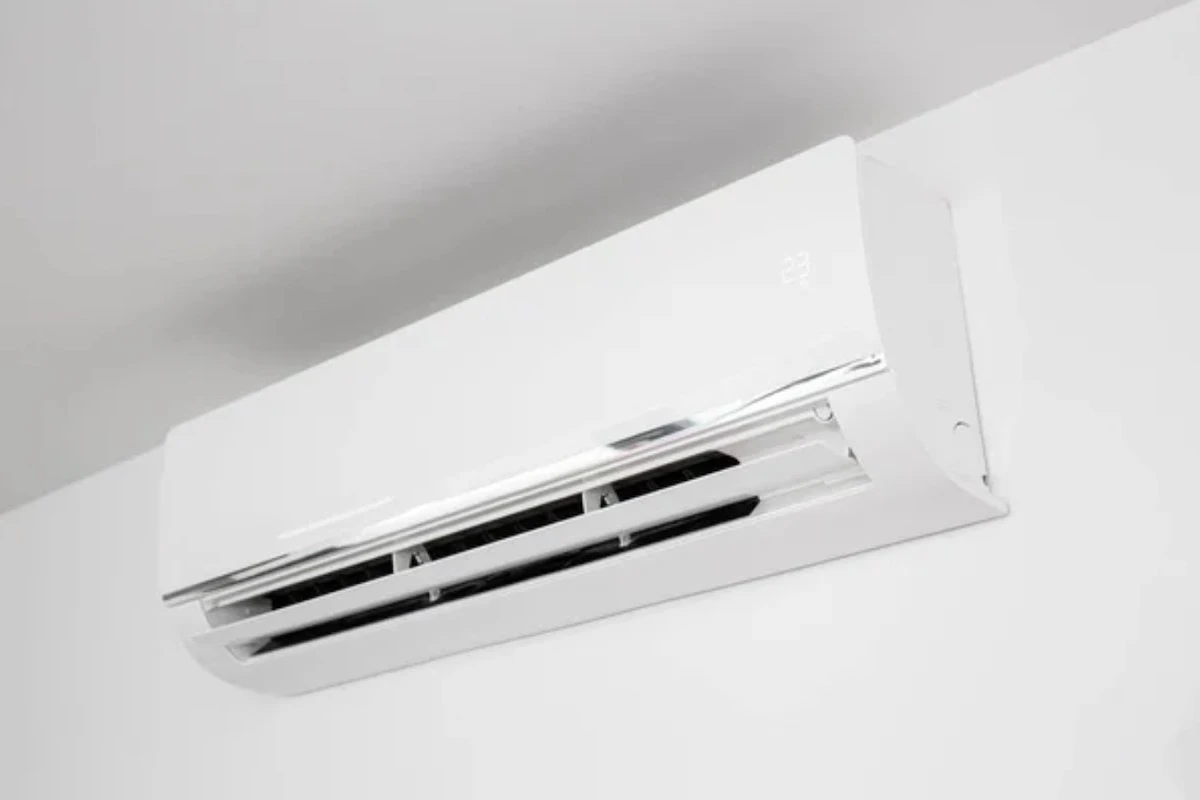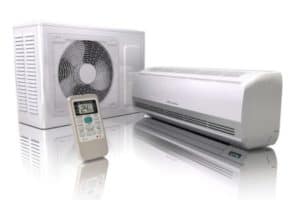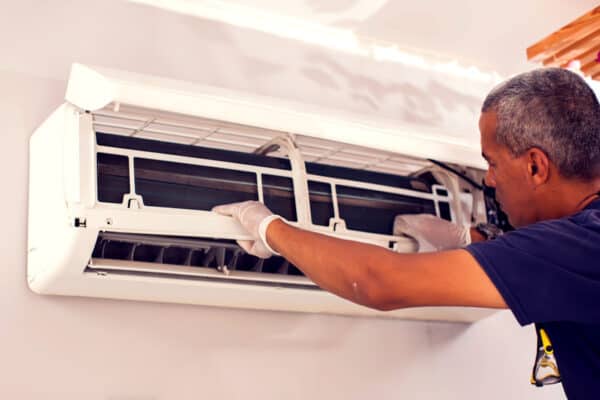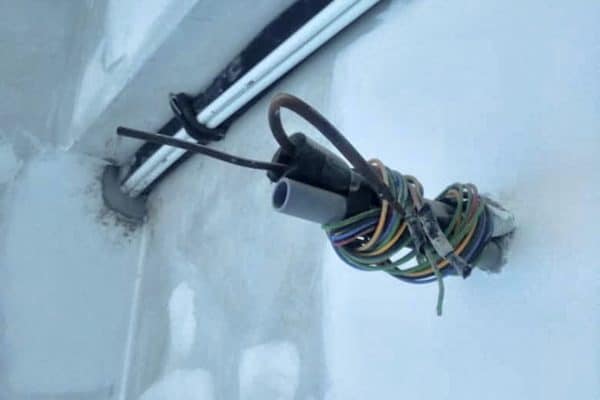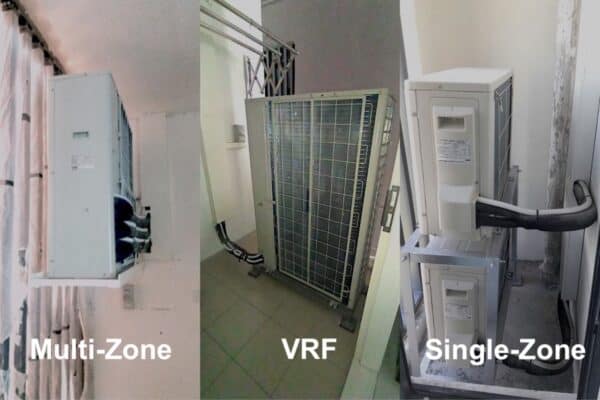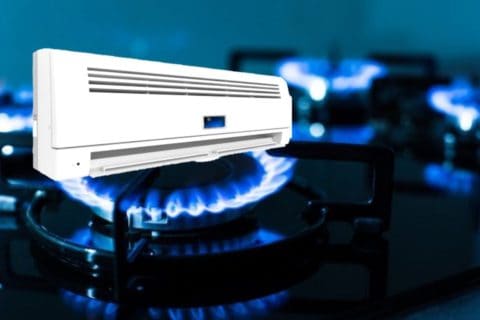Mini Split Specifications Explained
Mini splits are fairly complicated engineering products. Their specifications can be difficult to understand for non-technical people. So, this post explains the detail and meaning behind mini split specifications.
The important specifications to compare when buying a mini split are the capacity, efficiency and operating range. Others such as electrical voltage and piping connections are also important for the installation. Choosing the right-specs mini split ensures your heating and cooling needs can be met.
While most mini split specifications are straightforward, some of them need further explanations for people who are researching and comparing mini splits across different brands.
Model Number
The specifications of a mini split start with the model number. Every mini split has a model number for the indoor unit and the outdoor unit. For example, MSZ-FS06NA is the indoor unit model number and MUZ-FS06NAH is the outdoor unit model number of a Mitsubishi mini split.
Sometimes, mini splits have a system model number. For instance, LA090HYV3 is the system model number of an LG mini split where the indoor model number is LAN090HYV3 and the outdoor model number. is LAU090HYV3.

The model number of a mini split is very important for identification. As the version of the mini split changes, the model number will be revised.
Mini split model numbers can also be used to identify the rated cooling capacity. The numerical figures in a model number is corresponding to a rated cooling capacity. For example:
| Indoor Unit Model Number | Rated Cooling Capacity |
|---|---|
| MSZ-FS06NA | 6,000 BTU |
| MSZ-FS09NA | 9,000 BTU |
| MSZ-FS12NA | 12,000 BTU |
| MSZ-FS15NA | 15,000 BTU |
| MSZ-FS18NA | 18,000 BTU |
However, not all mini splits follow the same model number structure. Refer to the capacity section for the actual rated cooling capacity of the mini split.
Capacity
The capacity of a mini split heat pump is separated into cooling capacity and heating capacity. For cooling-only mini splits (known as mini split air conditioners), the heating capacity is empty.
The cooling capacity and the heating capacity of a mini split are expressed in British Thermal Unit per hour (BTU/H). They are “rated” based on the AHRI test conditions.
The capacity range states the minimum cooling/heating capacity and the maximum cooling/heating capacity where the mini split can operate. For example, a 6,000 BTU/H mini split has a cooling capacity range of between 1,700 BTU/H and 9,000 BTU/H. If the operating conditions are in favor compared to the rated conditions (AHRI test conditions), the mini split capacity increases and vice versa.

The moisture removal rate of a mini split is expressed in pints per hour (pints/h). It is the dehumidification capability of the mini split which can only be found under the cooling capacity. Heating does not remove moisture.
Some mini splits have the sensible heat factor stated in their specification sheet. Sensible heat factor is the ratio/percentage of sensible cooling capacity. It is used by professionals for specific applications.
The heating capacity at 47°F is the heating capacity of the mini split at 47°F outdoor dry-bulb temperature. The heating capacity at 17°F is the heating capacity of the mini split at 17°F outdoor dry-bulb temperature. Both are the “rated” heating capacity under AHRI test conditions.
Sometimes, the maximum heating capacity at other outdoor dry-bulb temperatures is also stated. For instance, maximum heating capacity at 5°F and -5°F. It is the heating capacity reference for cold climate applications.
By the way, if you want to learn more about mini split especially how to design it for your house, consider my Mini Split (eBook). You’ll learn what is Mini Split, how to choose and more importantly, spark more design ideas to improve the energy efficient of your house. But, if you need a second opinion or want someone to help you design, then you can consider my consultation service.
Consultation Service
Ask me for HVAC advice such as brand selection, best model, benefits, features, placement, duct size, grille size, how to design, design check, verification and other HVAC related queries.
Efficiency
The efficiency of a mini split is expressed in SEER2, HSPF2, EER2 and COP.
SEER2 stands for seasonal energy efficiency ratio 2 (previously SEER). HSPF2 stands for heating seasonal performance factor 2 (previously HSPF). EER2 stands for energy efficiency ratio 2 (previously EER) and COP stands for coefficient of performance. Learn more here.
The efficiency of a mini split in cool mode (cooling) is represented by SEER2 and EER2 while in heat mode (heating), the efficiency is represented by HSPF2 and COP.

The rated COP is the efficiency of the mini split in heat mode at 47°F outdoor dry-bulb temperature (the rated conditions). The COP at 5°F is the efficiency of a mini split in heat mode at 5°F outdoor dry-bulb temperature.
Since SEER2 and HSPF2 are based on the rated conditions (AHRI test conditions, 47°F outdoor dry-bulb temperature), COP at 5°F is the heating efficiency reference for cold climate applications.
Operating Range
The operating range of a mini split states the minimum and maximum outdoor temperatures in which the mini split can operate. For example, a mini split with an ODU (outdoor unit) heating operating range of -13-65°F can maintain its operation in heat mode when the outdoor temperature is between -13°F and 65°F.
Depending on the protection system, a mini split may trip when it is out of the operating range. Warranty may be voided if a mini split is operating out of its operating range.

Sometimes, the indoor unit operating range is also stated. It shows the minimum and maximum indoor room temperatures where the mini split can operate. It is not the indoor temperature that the mini split is able to cool/heat to. The setpoint range is the temperature that users can set but not the temperature the mini split can cool/heat to.
Certain mini splits have optional accessories such as a wind baffle or different settings such as changing the dip switch settings to extend their operating range without triggering the mini split protection system. If carried out properly, the warranty is covered.
Electrical
Most mini splits require 208-230V, 60 Hz, single-phase power supply (208-230/60/1). Some mini splits require 110-120V, 60 Hz, single-phase power supply (110-120/60/1). Mini splits operate within the voltage range.
The power input of a mini split is expressed in kilowatts (kW) or watts (W). Mini splits require a different amount of power when operating in cool mode and heat mode. For example, Fujitsu 09LSAZ1 requires 0.5kW for cooling and 0.66kW for heating at the rated conditions (47°F outdoor dry-bulb temperature). The maximum power and current show the maximum wattage and amperage the mini split can reach under any given conditions.

Sometimes, the recommended breaker size is stated in the specification sheet. For instance, the recommended breaker size for Fujitsu 09LSAZ1 is 15 amp (15A). Other times, such electrical details can be found in the installation manual. See How to Wire a Mini Split.
Piping Connections
The piping connections of a mini split is separated into the pipe size for the liquid line, gas line and drain line. It is expressed in terms of the diameter of the copper tube in inches. For example, the liquid line size of a mini split is 1/4″, the gas line size is 3/8″ and the drain line is 5/8″.

The maximum inter-unit piping length (or maximum pipe length) is the maximum pipe length between the indoor unit and the outdoor unit of the mini split. It is the total piping distance between the two units. For instance, the farthest distance the outdoor unit of a mini split is 82-1/64 ft away from its indoor unit in terms of the total pipe length.
The maximum inter-unit height difference is the maximum height difference between the indoor unit and the outdoor unit of the mini split. It is the vertical height difference between the two units. For instance, the highest the outdoor unit of a mini split can be placed relative to its indoor unit is vertically 65-5/8 ft.
Mini splits may not work if the installed pipe length exceeded its maximum pipe length.
Most mini splits are pre-charged with a certain amount of refrigerant. The chargeless pipe length is the longest refrigerant pipe length between the indoor and outdoor units which the mini split can operate without charging additional refrigerant. For instance, a mini split doesn’t require an additional refrigerant charge if the total refrigerant pipe length between the indoor and outdoor units is 49.2 ft.
If the installed refrigerant pipe length between the indoor and outdoor units of a mini split exceeded the chargeless pipe length, a certain amount of additional refrigerant is required. For instance, 0.22 oz of refrigerant is needed for every foot of refrigerant pipe beyond 49.2 ft. So, if the total refrigerant pipe length is 60 ft, the additional refrigerant required is 2.376 oz. See How to Charge a Mini Split.
Some mini splits don’t state the additional refrigerant required on the specification sheet but it can be found in the installation manual. Refer to it for the calculation.
Refrigerant Type
The refrigerant type of a mini split states the type of refrigerant used in the mini split. Most mini splits use R410A refrigerant but new mini splits may use R32 refrigerant (see R32 mini splits). Charging the wrong type of refrigerant may damage the mini split and avoid the warranty.
Noise Level
The noise level of a mini split is expressed in terms of sound pressure level, decibels (dB). It is separated into indoor and outdoor, representing the noise level of the indoor and outdoor units of the mini split.

Sometimes, the noise level of the indoor unit is further separated into high, medium, low and quiet. The high, medium and low are corresponding to the fan speed setting and the quiet is when the mini split is operating in the “quiet mode”. See Air Conditioner Modes Explained.
The noise level is measured in a controlled environment. Hence, it may differ from the actual noise heard. Learn more about What is a Good Noise Level for an Air Conditioner.
Other Specifications
Here are the rest of the specifications which the definition is as the name suggests:
- Dimension – The physical size of the indoor and outdoor units of the mini split. See the smallest mini split.
- Weight – The weight (shipping/net) of the indoor and outdoor units of the mini split.
- Airflow Rate – The airflow of the indoor and outdoor units of the mini split.
- External Static Pressure – The strength of the indoor blower for ducted mini splits only.
Based on specifications, good mini splits can be identified. See the best mini splits in 2023.
Lastly, consider my Mini Split (eBook) if you want to know how can you use Mini Split in your house. If you still have doubt or not feeling confident enough, feel free to consult me.
Consultation Service
Ask me for HVAC advice such as brand selection, best model, benefits, features, placement, duct size, grille size, how to design, design check, verification and other HVAC related queries.


